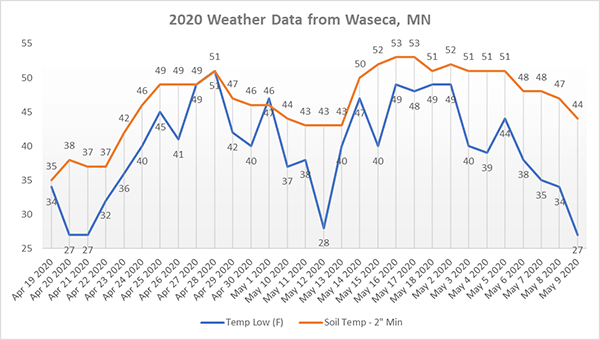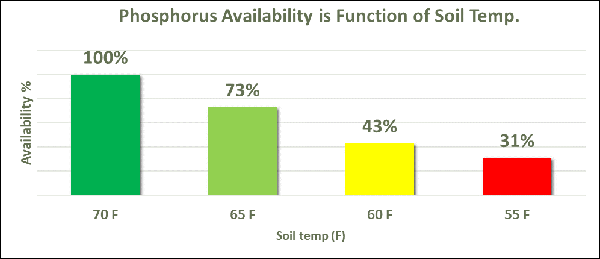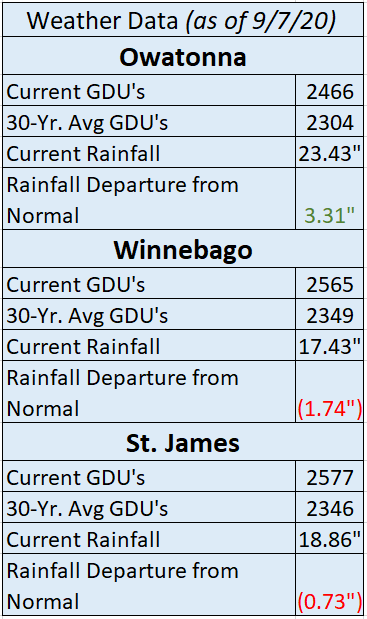2020.09.09 Growing Insights
Sep 09, 2020

|
|||||||
| 2020 Planting Conditions Review | |
| Corn yield is a simple equation of ears/acre X kernels/ear X weight/kernel. As we close out August and harvest nears, we’ll get the final report card on the decisions we made and the environment we made them in. Certainly, 2020 has been a unique year, and it can be easy to forget what planting conditions were like more than 4 months ago. Since ears/acre create such a large part of determining final yield, much of the success in yield of 2020 will be attributed back to planting conditions, evenness of emergence and final plant stand. Keep in mind that this year, 76% of corn was planted by May 3rd. Last year, 76% was finally planted by June 2nd. Field conditions seemed to be ideal in late April, but our soil temperatures told a slightly different story. The graph below is from the University of Minnesota Southern Research and Outreach Center in Waseca, MN. The orange line is 2” soil temperatures and the blue line is the low air temperature of the day. As you can see April 19th-April 24th had soil temperatures below 42 degrees and dipping as low as 35 degrees. It took until May 15th to have temperature stay above 50-degrees, which was almost 3 weeks after a majority of corn was planted! Plus we had a frost on May 12th! Given the late planting dates of 2019, it’s certainly understandable why we decided to plant when we could this year! |
|
|
|
 |
| The impact of planting in cool conditions can be visible walking corn fields today. For example, look at the image below that shows the difference in evenness of ear set that can be attributed to how consistent the corn emerged. The full in-furrow starter fertilizer package, plus Zinc and Ascend made a dramatic difference in how consistent corn came out of the ground. | |
|
|
 |
| Phosphorus availability is a function of soil temp., and the image below reminds us that only about 30% of soil P is available to the corn seed at the soil temperatures we often plant at. Starter fertilizers are key to growth and development to manage cooler soil temps and we can see the differences today by looking at location the ears have developed relative to their neighbor! You can also see an advantage with a phosphorus-based starter fertilizer with the addition of Zinc and Ascend. The micronutrient zinc is important to corn plants for a number of reasons. Zinc acts as a catalyst for enzyme creation and is a precursor for auxin hormones that signal seed germination. When early zinc levels are adequate, there is more consistent seed germination and plant emergence. Products like Ascend® SL and Ascend® Pro are added with starter fertilizer since they contain an optimal combination of three EPA registered plant growth regulators designed to provide vigorous early plant germination and emergence, a robust root system, larger leaves and wider stems.
|
|
|
|
 |
Please let your local CFS representative know if you are interested in walking your corn fields to look at how even your ear set looks this year!
|

